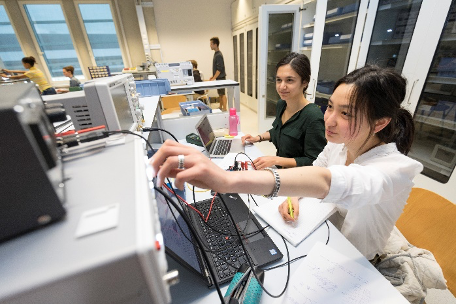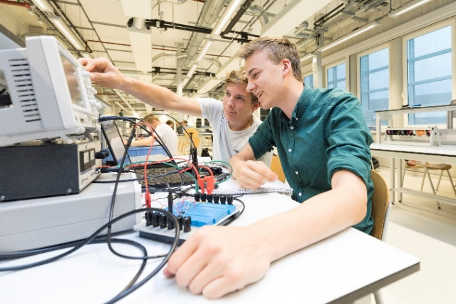Module 4 (Dynamics)

In module 4 ‘Dynamics’ you will design, build, test and analyse a working accelerometer! This could be a pedometer, a seismometer, an inclinometer, etc. – the scope is up to you and your project team – and the rest of the module is designed to help you accomplish this goal.
Subjects Module 4
In the `Dynamical Systems’ part, the students will learn how to model dynamic systems with an emphasis on mechanical and electrical systems as a set of coupled differential equations. The analytical solution of these mathematical models in time and frequency domain is done through analysis of the input-output equation and the transfer function by using Laplace transformations. The State model is introduced as a more generic approach to solve Multi Input Multi Output (MIMO) systems.
In the project `Accelerometer’, an acceleration sensor is used to study a mass-spring-damper system. The students design and realize their own accelerometer system. The knowledge from Advanced Engineering is needed for mathematical modeling and analysis of the system. Besides analytical calculations, the second-order differential equation is implemented in Simulink for numerical simulations. The knowledge from Instrumentation is used to realize the electronic readout of the accelerometer system.
The main objective of the `Basic Electronics and Instrumentation’ course is to familiarise the students in a hands-on fashion with the basics of analogue electronics and signal processing. This is done by designing, building and testing basic electronic circuits. Starting off with very basic circuitry, providing a rather poor system performance, the students will gradually improve and extend their circuits and at the end they will be able to realise and understand a fully-fledged detection circuit for the accelerometer project.
Linear Algebra introduces the description of linear systems by using a matrix. The basic operations of vectors and matrices, such as addition, multiplication, inverse and transpose will be treated. The application of matrices to evaluate the evolution of dynamical systems (eigenvectors and eigenvalues) and to describe linear transformations is given.
Accelerometer Project

Labratory practice
Hands on experience with lab equipment is largly integrated into the AT programme

Cooperation
Together with your partner you solve the given problems
